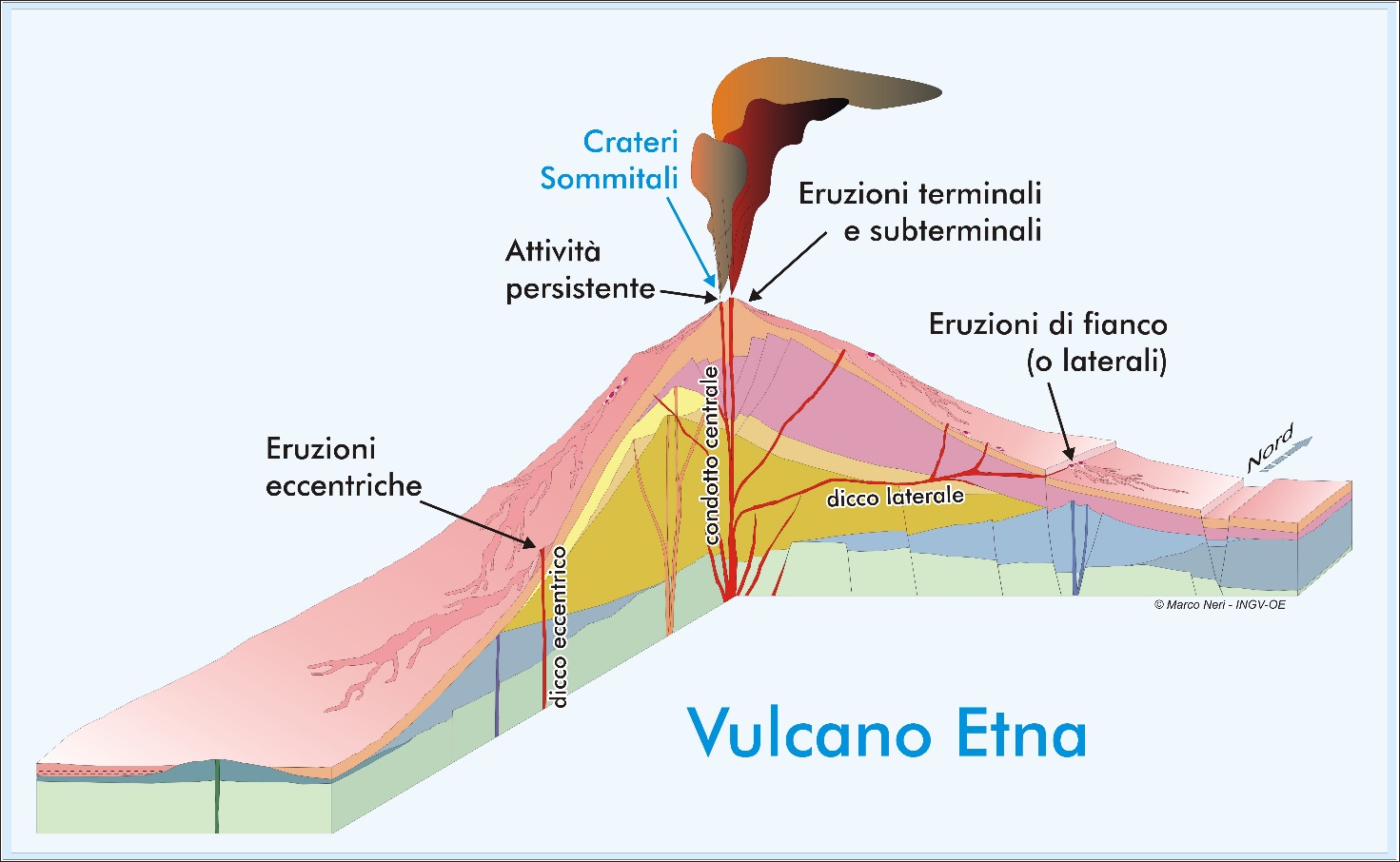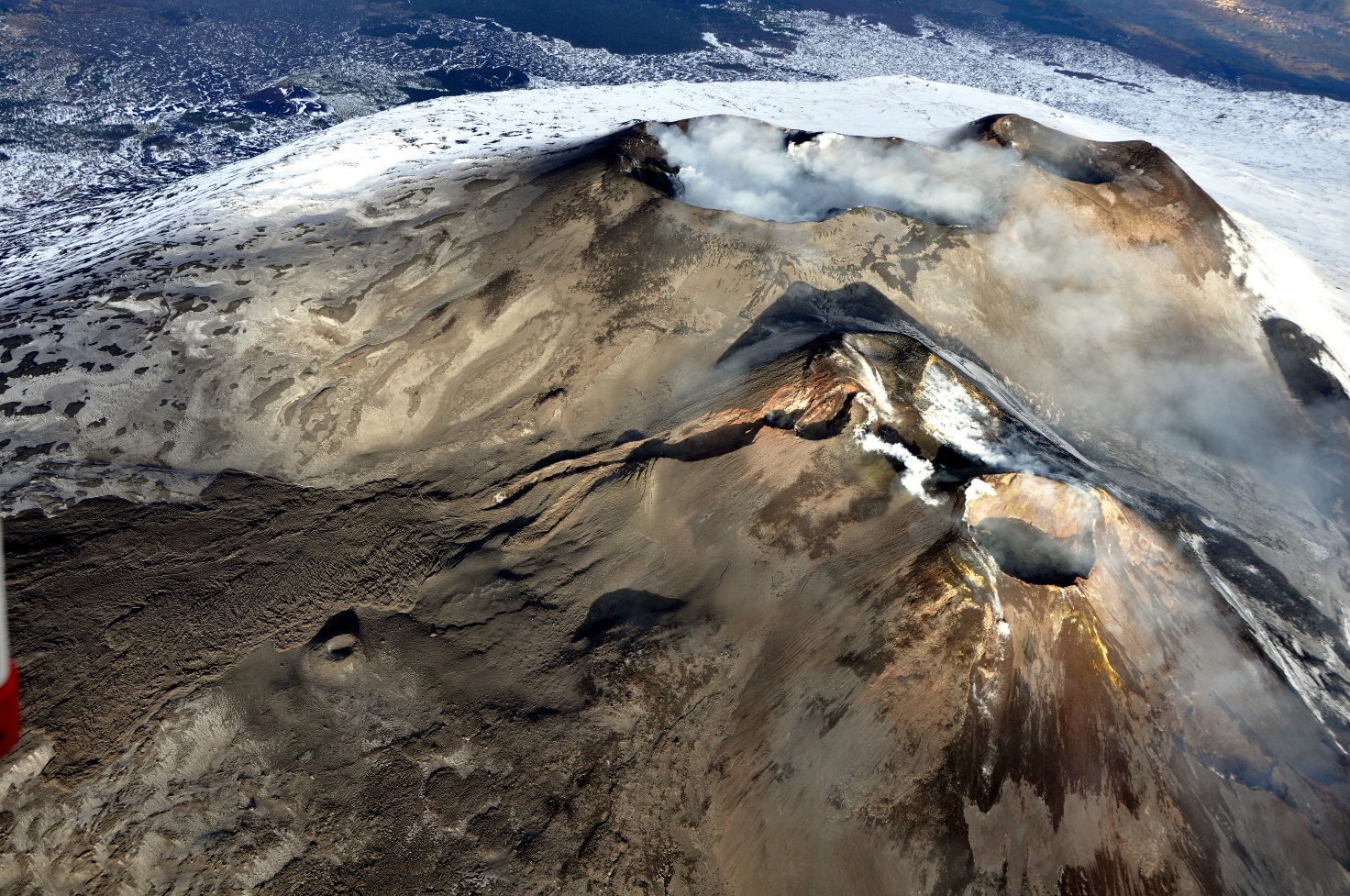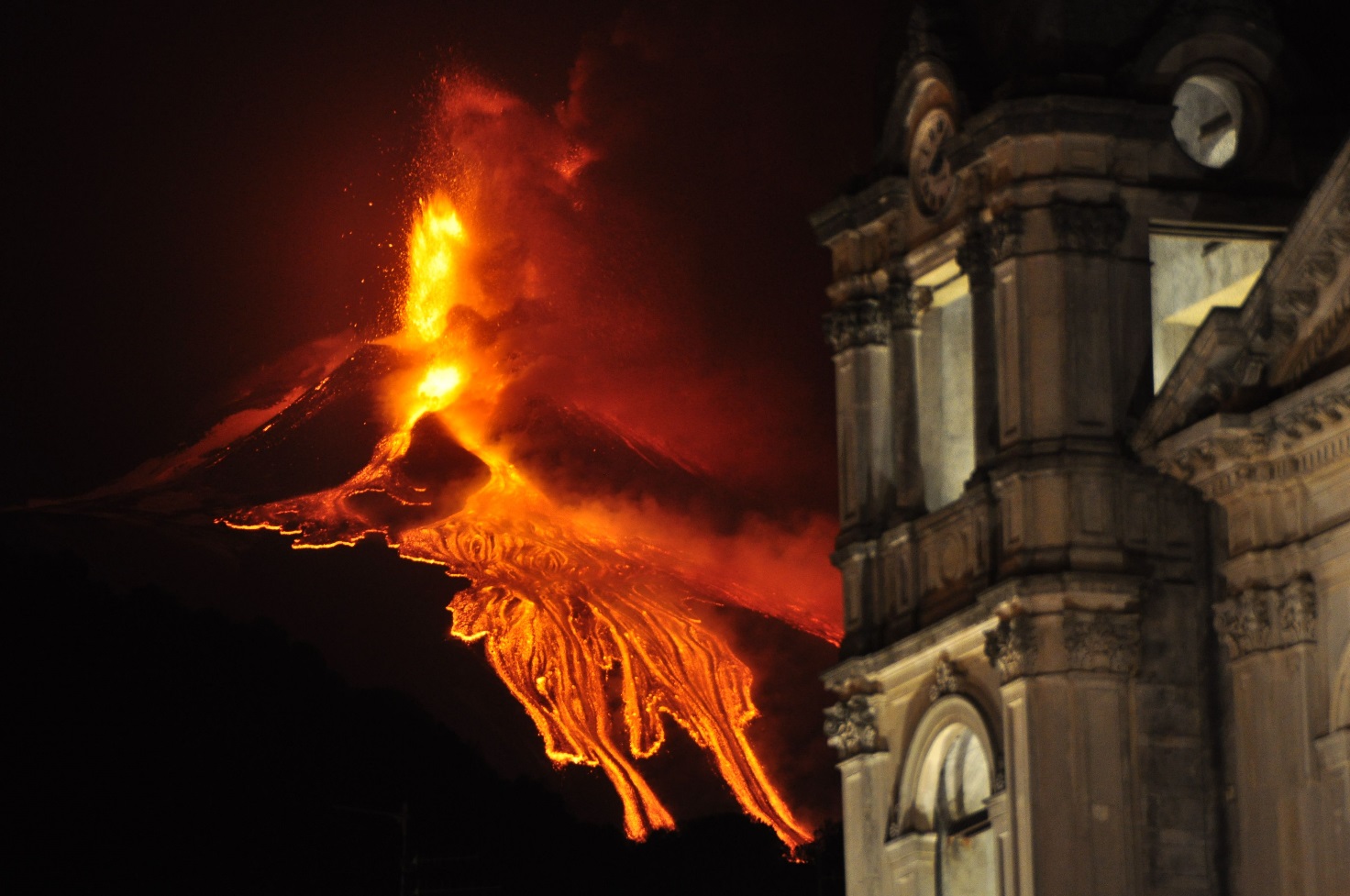
Figure 1 – Scheme of the types of volcanic eruptions and of the related Etna power systems (geological scheme of M. Neri, INGV-OE).

Photo 2 - Summit crater area of Etna, taken from the South-East (Photo by M. Neri, INGV-OE)

Photo 3 – Violent Strombolian activity (lava fountain), accompanied by the emission of copious lava flows, which took place on April 24, 2012 at the New Southeast Crater. Right, glimpse of the Mother Church of Zafferana Etnea. Photo by M. Neri.
Etna volcanic activity of 12 April 2013 (54)
Stromboli volcanic activity of 17 April 2013 (29)
Location and maximum height: eastern Sicily, 37.748°N -14.999°E; M.Etna= 3324 m above sea level
Area: ≈1250 km2
Volcano type: stratovolcano
Main types of eruptions: effusive, Strombolian
Prevailing phenomena: degassing from the summit craters, summit and lateral eruptions, ground deformations, seismicity
Beginning of eruptive activity: ≈500.000 years
Last eruption: December 2018
Activity status: active
Alert level (current): Basic
Mount Etna is the highest active volcano in continental Europe. It has a very long eruptive history that has been going on for over half a million years, but only in the last hundred thousand years has the volcano taken on the conical shape that characterizes it today.
http://www.ct.ingv.it/it/carta-geologica-del-vulcano-etna.html
The magma rises to the surface through an open central conduit which continuously releases the gaseous phases, generating the characteristic plume that can be observed on the top of the volcano.
The current eruptive activity can be classified into three different categories (Figure 1):
-
persistent activity: continuous outgassing from the Summit Craters (Photo 2), which can also evolve into low energy Strombolian activity.
-
terminal and sub-terminal eruptions: lava eruptions and/or lava fountains (Photo 3) that occur from the summit craters present on the top of the volcano (terminals) or from their immediate vicinity (sub-terminals).
-
lateral and eccentric eruptions: they occur from eruptive vents that open along the slopes of the volcano, fed by magma that rises along the central conduit (lateral eruptions), or through conduits independent from the central one (eccentric eruptions).
Lateral and eccentric eruptions formed several hundred adventitious pyroclastic cones, mostly concentrated in three main sectors known as "volcanic rifts" (South Rift, West Rift and Northeast Rift).
The adventitious cones that grow side by side along the same eruptive fissure form the so-called "boutonnieres". Their dimensions, extremely variable, can reach considerable volumes (up to almost 100x106 m3). Lava flows originate from the eruptive vents (temperature T = 1.150-1.050 C°) generally very fluid, which can go several kilometers away in relation to the rate of effusion, the inclination of the slope on which they flow and the chemical-physical characteristics of the magma.
The lateral and eccentric eruptions are the most dangerous for the Etna populations, as they tend to cover and destroy the numerous cities that rise on the slopes of the volcano, inhabited overall by almost a million people.
The eastern flank of Etna is continuously deformed and translated towards East and South-East through slow movements of the ground, with average deformation rates sometimes exceeding 2-4 cm/year. The unstable sectors are delimited, on the surface, by active faults that cross densely urbanized areas.


